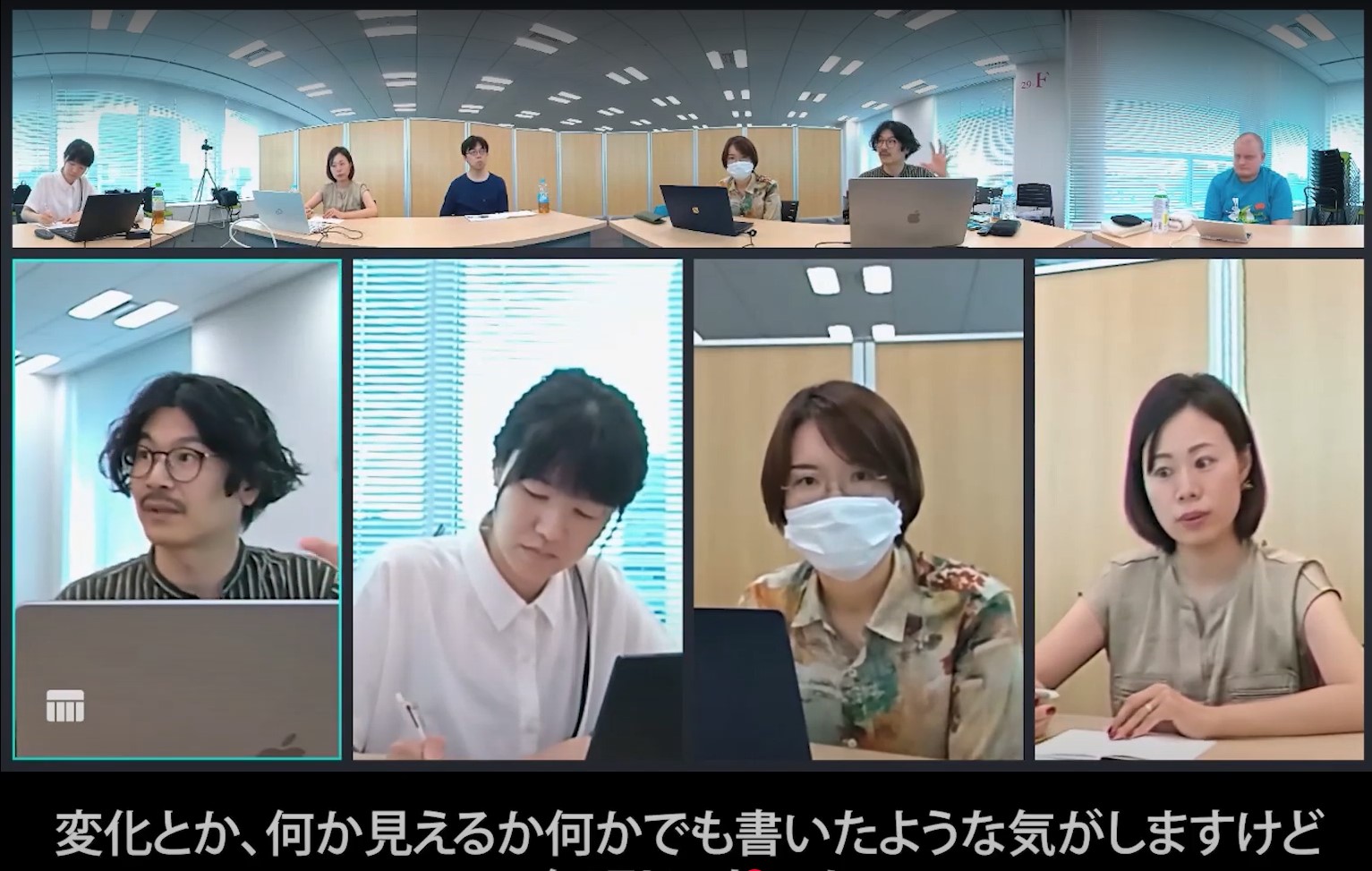Liberal Arts Communicator Project: Dialogue for Interdisciplinary Collaboration

Since fiscal year 2017, the National Institutes for the Humanities (NIHU) has been employing and training young doctoral degree recipients as “Lliberal Aarts Ccommunicators.” Previous editions of NIHU Magazine have featured individual communicators' activities; in this issue, we focus on the collective activities of this group of scholars.
The activities of Lliberal Aarts cCommunicators are diverse and multifaceted. One of these is a monthly research meeting—held in person or online—in which the communicators discuss their individual research efforts and upcoming projects. Last year, one initiative was a dialogue aimed at fostering interdisciplinary collaboration.
The goal was to identify opportunities for joint research. To facilitate this, a dialogue session was organized, bringing together five of the six communicators along with myself (specializing in Western architectural history), to explore possible directions for collaboration. The three-hour-long discussion was recorded on video and used as a reference for future dialogues. Additionally, the video was edited to create a short clips for use as a teaching materials for an intensive lecture course (“Research Communication in Humanities and Social Sciences—Beyond Borders among Humanities, Social Sciences and Natural Sciences”) at the University of Tsukuba.

Several important points for discovery and collaboration emerged from the conversation. For example, methods of collecting data vary depending on whether the research is document-based or fieldwork-based. In the case of the former, which includes literary studies, researchers first access repositories—libraries or archives of ancient texts, for example—or [digital] databases. Then, they look at the data—texts, illustrations, maps, or other elements—to study its content and interpret its meaning. In contrast, fieldwork involves researchers visiting the site and engaging with people in the local language or dialect, and treating these interactions as research data.
Understanding such differences in research approaches to research is the first step toward interdisciplinary collaboration. However, this alone is not enough to sustain meaningful dialogue. Before engaging in discussions, we implemented the following two initiatives.
1. Research presentations by individual communicators at monthly seminars
Research topics have included symbolism in war-themed anime; commentary on waka poetry from the medieval and early modern periods; preservation and transmission of the dialect spoken on Okinoerabu Island, Kagoshima; representations of women and about crime in the novels of Kirino Natsuo; video visual art; and menarche rituals in Kathmandu, Nepal.
| No. | Participants | Topics | Contents |
| 1 | Kawata Yokoyama |
(Event) In-person Transcription of Historical Documents | Targeting medieval, early modern, and contemporary Japanese (including dialects) |
| 2 | History and Legends of Okinoerabu Island as Revealed in Classical Texts | Exploring the history of Okinoerabu Island (e.g., relations with the Satsuma Domain) and its legends through historical texts found on the island | |
| 3 | Yokoyama Komai Sawazaki |
Women and Work on [Okinoerabu] Island | A documentary film by researchers studying the labor conditions of women on Okinoerabu Island |
| 4 | Alt Sawazaki Ohba |
Representation and Transformation of Architecture and Cities in War-Themed Anime | A documentary comparing the depiction of buildings like the Atomic Bomb Dome in Barefoot Gen and other war-themed works, as well as cities like Hiroshima and Tokyo, with the way they look today |
| 5 |
Alt |
Lunch Box in the Past and Present (focus on literature and anime) |
Exploring the history of lunch box in Japan through works from the medieval and early modern periods, depictions of modern-era lunch box in war-themed anime, and the portrayal of contemporary lunch box in the novels of Kirino Natsuo |
In preparation for the dialogue, we listened to each communicator’s presentation, identifying common keywords and filling out collaboration worksheets according to our individual interests and potential points for discussion. During the dialogue, we delved deeper into the points noted on the worksheets and explored ideas for collaboration.
Finally, it should be noted that this dialogue is not an end-point of interdisciplinary collaboration but the starting point. In the 2025 fiscal year and beyond, we plan to continue holding discussions and engage in further discussions or preliminary research as we pursue full-scale interdisciplinary collaboration.
(Text: Go Ohba, Researcher, Center for Innovative Research, National Institutes for the Humanities)
